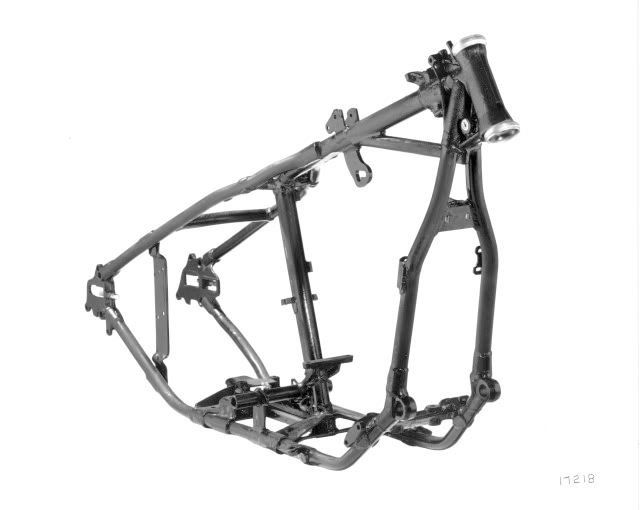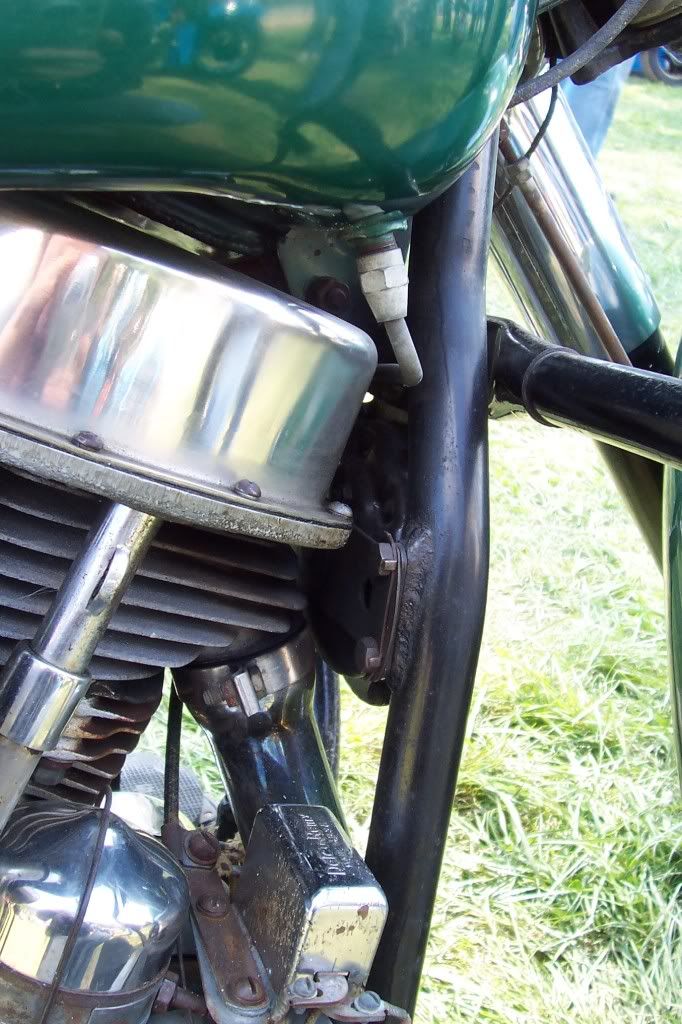Announcement
Collapse
No announcement yet.
50 Frame
Collapse
X
-
Yes they are parallel to each other. I believe all mounts on frames with the pressed flat spot were only welded at the top and bottom . An old horn strap makes a handy install jig.
Leave a comment:
-
I have what appears a 49-51 frame with flattened down tubes that has the horn mounts removed and I want to replace them. I think I understand the location from the C/L of the bottom of the lower tank mount slot to the top hole being 3 1/4". Are the blocks parallel to one another in the vertical, i.e equidistant when measured between corresponding mount holes from the block on the opposite side? Also, does the weld bead go around the entire outer edge of the block or something else?
This frame was without motor so I have no idea of the VIN or exact year.
Thanks,
Marc
Leave a comment:
-
I'm sorry, I should have made that point clearer. The 3-1/4" is measured parallel to the front down tubes, from the center of the radius at the bottom of the slot on the tank mount. While the lower tank mount is a slot, it is not near long enough to get a good true vertical measurement from the horn mounts. Somewhere I have an old horn mount strap minus its horn and it has a line scribed across at the upper mount hole center line. That is my install jig.Originally posted by Bill Pedalino View PostBMH:
I have to replace the horn mount tabs on my '53 FL.
The 3-1/4" measurement that you stated; I assume its the VERTICALl distance (rather than diagonal) from the C.L. of the lower tank mount hole in the bracket (between the downtubes) to the centerline of the top hole in the horm tab? In other words, you would pass a horizontal straightedge through the tank mount hole and measure down vertically (90 degrees) from that hole's C.L. to the C.L. top horn mount hole. Do I have it right?
Thanks!
Leave a comment:
-
Hi all.
The frame turned out to be a early 1948.
A fairly nice one and an easy restorer.
Hope Tony doesnt mind me saying.
I dont think he knows how we all thrash and nash away at night untill the correct info is laid out, so I thought I would let you know.
Rest easy guys. Stand down. Its done.
Brian. I will email you on the 49 info.
Regards Steve
Leave a comment:
-
BMH:
I have to replace the horn mount tabs on my '53 FL.
The 3-1/4" measurement that you stated; I assume its the VERTICALl distance (rather than diagonal) from the C.L. of the lower tank mount hole in the bracket (between the downtubes) to the centerline of the top hole in the horm tab? In other words, you would pass a horizontal straightedge through the tank mount hole and measure down vertically (90 degrees) from that hole's C.L. to the C.L. top horn mount hole. Do I have it right?
Thanks!
Leave a comment:
-
Steve, how about a later machine with the early style? That pic I posted is of a machine in the late 9500's. I also have photos of one in the 11,000's with these style mounts. The pics came from an auctioneer who would not provide the last three digits of the vin. It was an estate sale, the original owner had passed away and it was up for auction. On another note, I think most people are a little too scared about letting their VIN out, If I was the type of person who punched numbers I wouldn't be too concerned with copying an existing number. I'd just punch a number that seemed good. After all copying a number that is already in the system would be a good way to get caught, those guys aren't that dumb.
Leave a comment:
-
Hi.
I should have also posted that high VIN 49 had the pressed downtubes and the thicker horn brackets that were tack welded on the ends.
I have tracked it back to just over VIN 10,000.
If anyone has a lower VIN number 1949 with the depressions/thick horn blocks on the downtubes, I would appreciate your info.
The bike would need to be "Known History" to be credible.
If you post your Engine VIN, keep the last digit blank. "I've heard there are longhaired ratbag Bikers on this forum"
Email me direct or personal message me on this forum.
Regards Steve
Leave a comment:
-
The prototype photos show that. I have never seen a production model with those mounts.Originally posted by Steve Little View PostHi. 1949 had unpressed tubes with thin horn mounts welded all the way around.

Leave a comment:
-
Hi.
1949 had unpressed tubes with thin horn mounts welded all the way around.
Hawghd1, If you want the frame positivley identified, send me an email. steve@raceframe.com.au
Regards Steve
Leave a comment:
-
You could just run a strong magnet over the area to see if a layer of bondo is present, if you prefer to leave it painted.
Leave a comment:
-
I have asked him if the frame was bare metal and he hasn't responded. Paint will hide a lot.
Leave a comment:

Leave a comment: